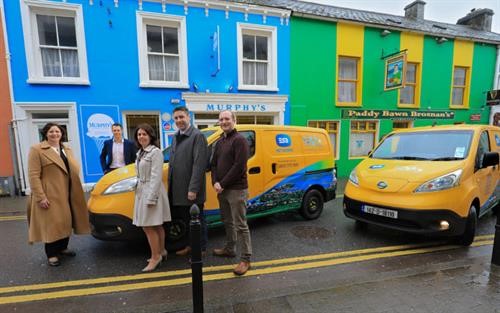Over the next decade or so, Ireland will go from having a few thousand electric vehicles and heat pumps using the network to hundreds of thousands, and from thousands of smart meters and contactable devices and sensors to millions.
by Pat O'Doherty, Chief Executive of ESB
The number of distributed generation and storage devices on the system will also increase dramatically. In the future, the flexibility needed to balance the system will increasingly be enabled through flexible demand mobilised through active customers, rather than flexible generation. This is the dance between generation and supply that Eamon Ryan TD sometimes refers to. Smart meters will enable demand flexibility and will also help to ensure, as far as possible, that new demand is complementary to the existing system.

Overall, these trends mean more data, more connectivity and more analytics. They will present new demands on the network that have to be anticipated and planned for now.
To address this change, ESB Network’s innovation strategy sets out eight roadmaps for transformation over the next decade. These include;
- connecting renewables
- customer engagement
- electrification of heat and transport
- asset optimisation
- network flexibility, operational excellence
- ·network resilience
- and working with the Transmission System Operator
The Dingle Project
One initiative that brings all of these roadmaps together is the Dingle Project.
With more than 4,700 homes, farms and businesses on the peninsula, Dingle will be at the heart of many smart network research projects and trials to see how best ESB Networks can facilitate all of the new demands on the national network that is most efficient in the coming decade.
While many of the technologies that are being deployed have already been proven in trials elsewhere, this is the first time that ESB Networks will have an opportunity to see how they work as a system in a real life environment, and how they meet the needs of customers.
These trials are expected to provide valuable insights, given the Dingle population ebbs and flows through the course of the seasons, so the variation in electricity load places particular demands on the network on the peninsula. The network on the peninsula is also subject to the extreme weather occasionally posed by the Atlantic Ocean, which is also valuable in testing the resilience of any new technologies.
The findings from the three-year project will in turn help ESB Networks deliver an electricity network to facilitate Ireland’s transition to a low carbon future.
We are hoping that over this time we will learn what the active energy citizen will be like in the future, what our network will have to be like in the future and what blend of technology will have to be rolled out to decarbonise our energy requirements.
Dingle Peninsula Ambassador Programme
As part of the project, ESB Networks has invited five locals within the Dingle Peninsula area to become ambassadors and trial energy efficiency measures, including the use of batter storage systems.
The selected ambassadors will get a suite of technology installed in their homes free of charge and in return they will required to speak with ESB Networks and their local communities to share their experience with this energy saving system. The ambassador programme is also used to identify any problems and to highlight any areas of improvement.
#esbbrighterfuture
This is an excerpt from Pat O’Doherty’s speech at the Energy Ireland Conference on Tuesday June 19.
